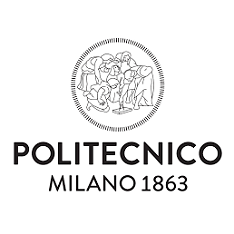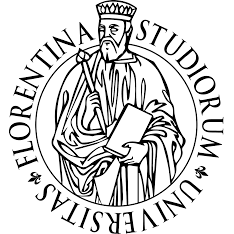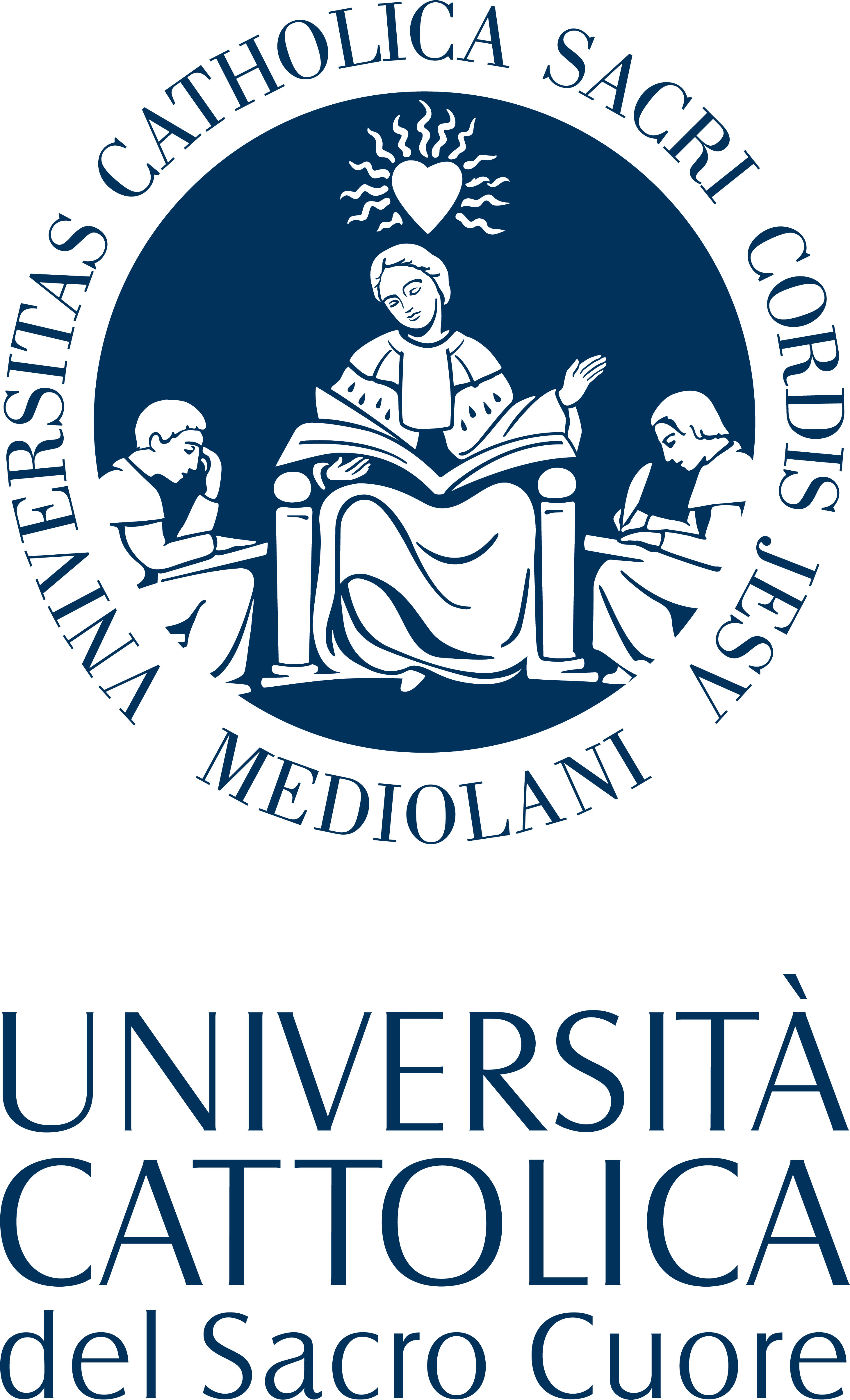abstracts
Andreas Alpers, University of Liverpool
Optimal Diagram Representations of Polycrystalline Microstructures
Abstract Voronoi diagrams and their generalizations, particularly so-called generalized balanced power diagrams (GBPDs), are increasingly used to represent grain shapes of polycrystalline materials at the microstructural scale. These diagrams can be described by few parameters and, in principle, only these parameters need to be recovered from tomographic measurements. Experimentalists have reported, however, that some parameters seem more important than others for describing certain families of materials. In this talk, I will focus on this finding and will provide some theoretical explanations within the framework of statistical learning theory. I will also discuss how the task of finding an optimal set of parameters can be formulated and solved via a support vector machine approach.
(The talk is based on recent joint work with P. Gritzmann, M. Fiedler, and F.Klemm.)
Paola Antonietti, Politecnico di Milano
Numerical modeling of neurodegenerative diseases
Abstract. Neurodegenerative diseases (NDs) are complex disorders that primarily affect the neurons in the brain and nervous system, leading to progressive deterioration and loss of function over time. A common pathological hallmark among different NDs is the accumulation of disease–specific misfolded aggregated prionic proteins in different areas of the brain (Aβ and tau in Alzheimer’s disease, α–synuclein in Parkinson’s disease).
This talk discusses the numerical modeling of the misfolding process: we present a suitable mathematical model (based on Fisher– Kolmogorov equations) and present a novel numerical discretization approach. Numerical simulations in patient-specific brain geometries reconstructed from magnetic resonance images are presented. In the second part of the talk, we introduce and analyse a computational framework that can comprehensively describe functional changes in the brain considering multiple scales of fluids and that can be regarded as a preliminary attempt to model the perfusion in the brain. In this context, cerebrospinal fluid transport plays an important role in removing waste (clearance) from the central nervous system. We present and analyze the numerical approach and we present simulations in three-dimensional patient-specific geometries.
Valentina Bordin - Davide Coluzzi, Politecnico di Milano
Biomarker Investigation using Multiple Brain Measures from MRI through XAI in Alzheimer’s Disease Classification
Abstract Alzheimer’s Disease (AD) is the world leading cause of dementia, a progressively impairing condition leading to high hospitalization rates and mortality. Several deep learning (DL) approaches have been developed to improve the automatic classification of AD. However, their lack of transparency has hindered their use in clinical settings. In this study, we propose two state-of-the-art DL models – ResNet18 and BC-GCN-SE – trained on structural MRI and brain connectivity matrixes derived from diffusion data, respectively. We evaluated both the models classification accuracy and interpretability using an Explainable Artificial Intelligence (XAI) approach (Grad-CAM). We used 132 brain parcels extracted from the Harvard-Oxford and AAL brain atlases to compare results with well-known pathological regions thus measuring their adherence to domain knowledge. Our findings showed that both models achieved good classification performance as compared to the existing literature (ResNet18: TPRmedian = 0.817, TNRmedian = 0.816; BC-GCN-SE: TPRmedian = 0.703, TNRmedian = 0.739). Statistically significant XAI assessments (p<0.05) and ranking of the most relevant parcels (first 15%) were conducted and revealed that ResNet18 and BC-GCN-SE models targeted the medial temporal lobe and the default mode network, which are known to be involved in the AD onset and progression. The obtained interpretabilities were not without limitations. Nonetheless, results suggested that combining different imaging modalities may increase classification performance and model reliability, thereby increasing confidence in DL models and promoting their usage as diagnostic aids.
Alberto Bravin, University of Milano Bicocca, Milan
X-ray navigation within specimens using the "virtual histology"
Abstract. "Virtual histology" is a recent imaging technique, achieved through the use of X-rays, which allows samples of biological origin to be viewed in 3D, at multiple resolutions.
Technological progress in the field of phase contrast X-ray tomography, performed with and without the use of contrast media, has made it possible not only to visualize the tissue structure in 3D in a minimally invasive way, i.e. without dissecting the samples, but also to being able to virtually navigate within them. Image processing allows the spatial structure of homogeneous classes of structures to be followed, allowing, for the first time, to study the architecture of tissues or the evolution of a pathology at a microscopic level.
The great potential shown so far by virtual histology is giving an unprecedented boost to the detailed 3D understanding of anatomical structures and contributing to the interpretation of the in-situ pathophysiological effects of innovative drugs or therapies. (The talk is based on joint work with Paola Coan, Ludwig Maximilian Universität, Munich, Germany.)
Sara Brunetti, Università di Siena
On binary matrices, pyramids, and tomographic data
Abstract. Based on the idea to "enhance" binary images towards integer matrices, we define a map from the set of binary images to the set of plane partitions. Then, exploiting the known bijection between plane partitions and (3D-)pyramids, we investigate the tomographic problem of reconstructing a pyramid from 2D binary data related to its binary skeleton.
In general, the reconstruction is not unique, due to the presence of switching components in the binary skeleton, whose position plays a crucial role on the height and the size of the resulting pyramid.
We present some remarks and examples on how different binary skeleton solutions can reflect on the geometry of the 3D reconstructed objects, in view of a possible strategy leading to minimal pyramids
Mara Cercignani, Cardiff University
MRI biomarkers of white matter integrity: insight & pitfalls
Abstract. The white matter of the brain constitutes the network of physical connections linking sets of neurons and enabling fast communication between them. As such, the white matter is instrumental to the efficiency of both, the healthy and the unhealthy brain.
Diffusion MRI made it possible to characterise and reconstruct white matter tracts in vivo non invasively and has enabled the mapping of white matter connections. On the microscopic level, quantitative MRI techniques can nowadays provide information about properties of the white matter, such as myelination and axonal size and density, which can directly affect parameters such as the speed of neuronal conduction. This portfolio of techniques, combined with functional assessments of connectivity, promise to unravel some of the mysteries of the human brain, including the possibility of understanding the relationship between anatomy and function. All MRI techniques, however, are indirect and suffer from bias and limitation. In order to interpret their results appropriately, it is important to understand such limitations. This talk will provide an overview of the main quantitative techniques used to map the white matter and what are the pitfalls associated with them.
Roberto Fedele, Politecnico di Milano
A 3D-Volume Digital Image Correlation procedure to detect the bulk deformation of composite samples during in situ testing
Abstract. In this communication the main features of a 3D-Volume Digital Image Correlation (3D-Vol DIC) code are outlined, based on three dimensional digital images provided by X-ray computed microtomography, see e.g. [1] and [2]. Such a code, developed for Intel Fortran, is based on a Galerkin- finite element discretization of the displacement field within the Region of Interest (ROI), and exploits a multiscale strategy. Descending along the image pyramid, the image matching function is linearized and Newton-Raphson iterations are carried out to achieve an estimate of the minimizing vector, providing a suitable initialization for the lower scale solution. To reduce the computational burden, strategies are implemented to split into blocks the heavy tomographic reconstructions, processed in a sequence, and, for each block, to handle the analyses relevant to the finite elements in parallel on diverse processors before operating the assembly of the pseudo-stiffness matrix and of the pseudo-load vector. Preliminary details are provided about an experimental campaign carried out at the Elettra (Trieste) synchrotron facility on SiCf/SiC small samples, about 1 mm thick, subjected to in situ mechanical loading [1]. The synergistic combination of X-ray tomography with in situ testing represents a new frontier of multidisciplinary research, see also [3].
References
[1] Fedele, R., Ciani, A., Galantucci, L., Bettuzzi, M., Andena, L., “A regularized, pyramidal multi-grid approach to global 3D-Volume Digital Image Correlation based on X-ray micro-tomography”, Fundamenta Informaticae, Vol. 125 (3-4), pp. 361–376, 2013. https://doi.org/10.3233/FI-2013-869
[2] Fedele, R., “Simultaneous Assessment of mechanical properties and boundary conditions based on Digital Image Correlation”, Experimental Mechanics, Special Issue, 55(1), January 2015 Special Issue: DIC Methods and Applications, 139-153. https://doi.org/10.1007/s11340-014-9931-x
[3] Fedele, R., Hameed, F., Cefis, N., Vergani, G., Analysis, Design and Realization of a Furnace for In Situ Wettability Experiments at High Temperatures under X-ray Microtomography Journal of Imaging 7 (11), 240, 2021. https://doi.org/10.3390/jimaging7110240
Paolo Finotelli, Université de Caen Normandie
An approach to the study of Post Traumatic Stress Disorders by using connectome, topology and functional connectivity
Abstract. In this talk I will focus on the Post Traumatic Stress Disorders (PTSD). In particular, I will discuss possible approaches to the study of these pathologies by means of structural and functional connectivity data, as well as the role of the structural connectivity from a topological point of view.
Peter Gritzmann, TU München
On the representation of polycrystals: Diagrams, clustering, and coresets
Abstract. We are dealing with the problem from materials science of representing and analyzing polycrystalline materials and their dynamics. We introduce various techniques for converting grain maps into geometric diagrams. In particular, weight-constrained anisotropic clustering allows to compute diagram respresentations from data on the volume, center and moments of the grains which are available through tomographic measurements. Also we develop new coreset techniques, interesting in their own right, which are utilized to significantly accelerate the computations. This effect is demonstrated on 3D real-world data sets.(The talk is based on recent joint work with A. Alpers, M. Fiedler, F.Klemm.)
Jaques-Olivier Lachaud, Université Savoie Mont Blanc
Full convexity: new characterisations and applications
Abstract. Full convexity was proposed recently as a sound alternative to classical digital convexity. Indeed, it guarantees in arbitrary dimension d the connectedness (and even the simple connectedness) of fully convex sets, while keeping a rich geometry. For instance digital planes and half-spaces are fully convex. We present here several new results and several open problems related to full convexity. One drawback of full convexity is that it require 2^d convex hull computations and lattice point enumerations. We show here that one convex hull computation and enumeration is enough to check full convexity. We then present two new possible characterisations of full convexity. We then focus on the computation of fully convex objects from digital objects and present two alternatives to the already presented fully convex enveloppe. If time permits it, we will conclude with an application of full convexity to polyhedrization of digital sets.
Marco Seracini, - University of Bologna
Ray-tracing algorithm for Beam Hardening Correction in Computed Tomography for Cultural Heritage
Abstract. When a Computed Tomography (CT) analysis is performed employing a not monochromatic source, the beam hardening problem can cause ”cupping” artifacts and image quality degradation [3].
Moreover, there are cases when, attempting a correction of these artifacts, by calibration-free techniques, could produce an over/under esteem of voxel values, especially if the reconstructed ”central slice” is not representative of the whole scanned volume [4].
Starting from this need, we introduce a calibration-free beam hardening correction technique, which improves the results achieved by some similar-approach methods known in the literature. Our model is more complete than the existing ones and it is suitable for the reconstructions of strongly asymmetric objects.
Moreover, it results particularly useful in all those cases where both the measurement time and the control of the geometry of the system are limited, due to particular experimental conditions, like the ones generally faced in Cultural Heritage campaigns (e.g., [1, 2]). Thanks to its contained computational cost, the new method can be extended to elaboration of big sized data.
References
[1] F. Albertin, M. Bettuzzi, R. Brancaccio, M.B. Toth, M. Baldan, M.P. Morigi, F. Casali, Inside the construction techniques of the Master globemaker Vincenzo Coronelli, Microchemical Journal, 158 (105203), (2020), doi: https://doi.org/10.1016/j.microc.2020.105203.
[2] R. Brancaccio, M. Bettuzzi, F. Casali, M. P. Morigi, G. Levi, A. Gallo, G. Marchetti, D. Schneberk, 3D Tomographic Reconstruction on HPC Cluster of the Kongo Rikishi (Japanese Wooden Statue of the XIII Century), Real Time Conference (RT), Conference Record on CD-ROM 17th Real-Time Conference, IEEE-NPSS Technical Committee on Computer Applications in Nuclear and Plasma Sciences, (2010), pp. 1-8, ISBN: 978-1-4244-7108-9.
[3] E. Van de Casteele, D. Van Dyck, J. Sijbers, E. Raman, An energy-based beam hardening model in tomography, Phys Med Biol., 47 (23), (2002), pp. 4181-90, doi: 10.1088/0031-9155/47/23/305.
[4] W. Zhao, G. T. Fu, C. L. Sun, Y. F. Wang, C. F. Wei, D. Q. Cao, J. M. Que, X. Tang, R. J. Shi, L. Wei, Z. Q. Yu, Beam hardening correction for a cone-beam CT system and its effect on spatial resolution, Chinese Physics C, 35 (10), (2011), pp. 978-985, doi: 10.1088/1674-1137/35/10/018.
Jan Sijbers, University of Antwerp
Model-based superresolution reconstruction for improved quantitative MRI
Abstract. In magnetic resonance imaging (MRI), there is an inherent trade-off between acquisition time, spatial resolution and signal-to-noise ratio (SNR). Fortunately, it has been shown that superresolution reconstruction (SRR) is capable of providing better trade-offs between resolution, SNR and acquisition time than direct high resolution MRI acquisitions. In this talk, model-based SRR is introduced for qualitative (i.e., scalar valued) MRI and recent extensions towards quantitative MRI (relaxometry, diffusion MRI and perfusion MRI) are presented, including joint motion estimation. Finally, an outlook is given towards physics informed neural networks for quantitative SRR-MRI.
Lama Tarsissi, Univ. Paris Est Marne La Vallée and Sorbonne University Abu Dhabi
Convexity preserving deformations of digital sets: Characterization of removable and insertable pixels
Abstract. In this talk, we are interested in digital convexity. This notion is applied in several domains like image processing and discrete tomography. We choose to study the inflation and deflation of digital convex sets while maintaining the convexity property.
Knowing that any digital convex set can be read and identified by its boundary word, we use combinatorics on words perspective instead of a purely geometric approach. In this context, we characterize the points that can be added or removed over the digital convex sets without losing their convexity. We give some algorithms and examples for each process.
Laurent Vuillon, Université Savoie Mont Blanc
Local to global dynamics in brain diseases
Abstract. In this talk, we continue to explore brain diseases at different scales. The first part presents a dynamic from protein misfolding to fiber construction. We will see a model of biological fiber and the link with local structures and the position of protein interfaces. In the second part, we explore how to change scale and how macro-structures appear and might be visible in brain imaging in Parkinson's and Alzheimer's disease. We discuss the propagation of the effect of protein misfolding and topology changes from the protein scale to macro-structures.


